#ford used engines for sale
Text

Ford Ranger Engine Replacement: Cost-Effective Solutions for Your Truck
#Reconditioned Ford Ranger engine#Ford Ranger Engine Replacement#Rebuilt Ford Ranger Engine#Used Ford Ranger Engines for Sale
0 notes
Text
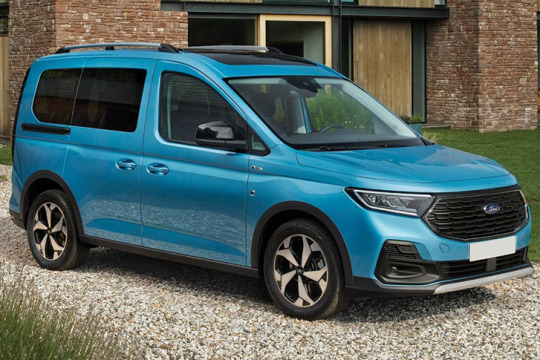
The Comprehensive Guide to Ford Tourneo Connect Used Engines: Benefits, Types and More
#Ford Tourneo Connect engines for sale#Ford Tourneo Connect Used Engines#Replacement Ford Tourneo Connect Engine#Used Ford Tourneo Connect Engines
1 note
·
View note
Text

Looking for a Ford used engine for your car, look no further…. Used Engines Inc. is the right choice for all kind of Used Ford Engines. Being one of the largest suppliers of used engines across the USA, we offer superior quality used engines for sale of every make, model, and year car, be it diesel or gasoline, foreign or domestic.
0 notes
Text
0 notes
Text

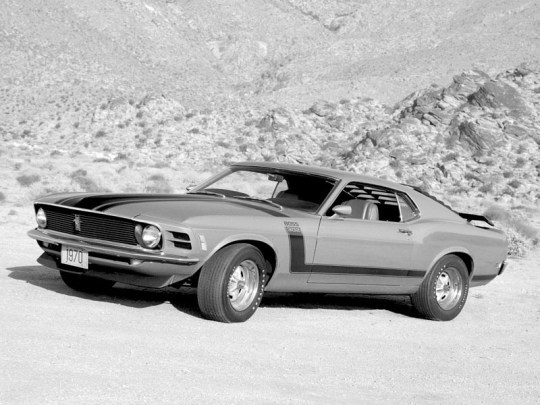
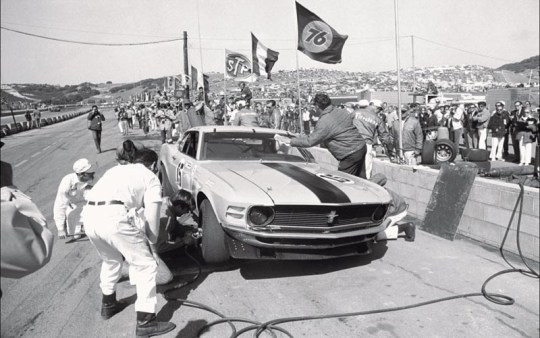
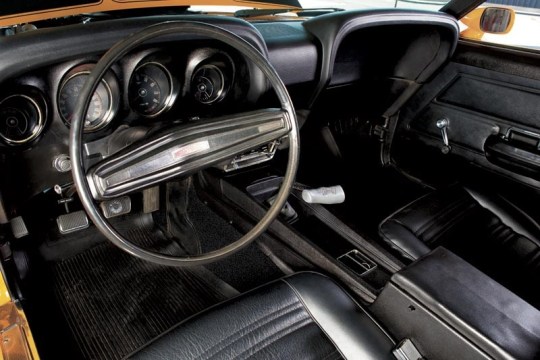
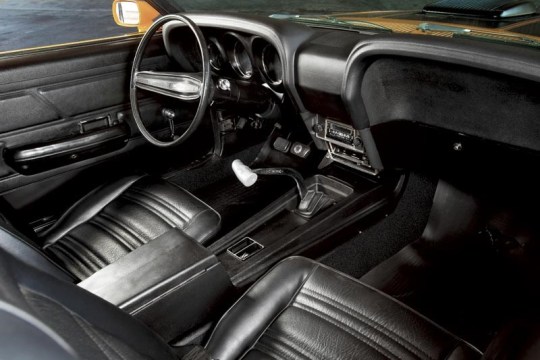



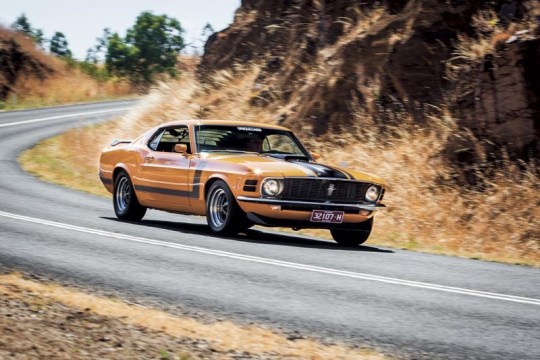

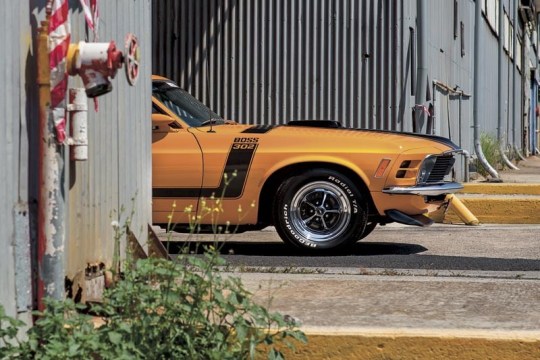
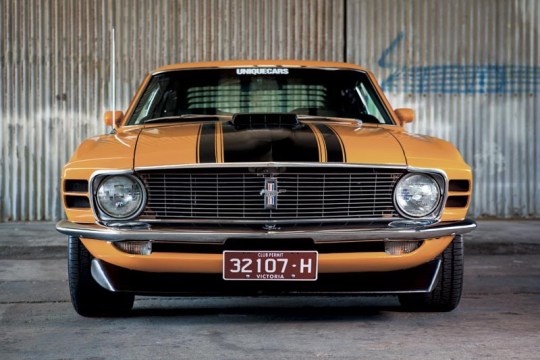

FORD MUSTANG BOSS 302
BOSS-A-NOVA!
They called it The Boss and for two short years it ruled the muscle car scene in the US, establishing itself as one of the greatest road and race cars of the era. Now, it’s one of the most collectible.
In 1960s US street lingo, if something was ‘boss’ it was cool, tough, the best. And the 1969 Boss 302 Mustang wore its badge with pride. It launched just four and a half years after the first Mustang was revealed to critical acclaim and record sales. Yearly updates to keep Mustang fresh in the face of tough new challengers from General Motors and Chrysler (particularly the Camaro) resulted in the once lean and pretty ’Stang muscling up, both in body shape and under-bonnet brawn, and the 1969-70 Boss models were the zenith of Mustang styling.
Thereafter, Mustangs became increasingly bloated and anaemic as the 1970s fuel crisis and stricter pollution laws cut horsepower and stylists lost their way; the rippling flanks and thrusting nose of the late 60s/early 70s cars gave way to boxy, bland designs. That early look would not be recaptured until 2005, when new Mustangs were given retro styling.
The Boss 302 was launched at the same time as its big-block brother, the Boss 429. Both were positioned as competition specials; Ford wanted to homologate its 302-cuber for Trans-Am and the 429ci monster for NASCAR. In fact, Ford went wild with engines between 1969-70, offering nine V8s – the ‘economy’ 302, 351 Windsor, 351 Cleveland, 390, 428 Cobra Jet, 428 Super Cobra Jet, 429 ‘wedge’, Boss 302 and Boss 429.
For the Boss 302, Ford’s high-compression 302ci small-block V8 was beefed up with four-bolt main bearing caps and redesigned ‘Cleveland’ cylinder heads with bigger inlet and exhaust valves, and ports that allowed the engine to breathe more efficiently.
These ‘semi-hemi’ heads were based on the Ford 427ci racing engine’s combustion chambers, and a balanced forged steel crankshaft and forged steel conrods allowed the engine to handle high rpms for sustained periods. A single 780cfm four-barrel Holley carburettor sat atop a high-rise aluminium inlet manifold, while a dual-point distributor, high-pressure oil pump, windage tray and screw-in welch plugs were further indications of its competition intent.
A rev limiter was fitted, progressively cutting spark from 5800rpm to 6150, but it was easily bypassed and the Boss 302 could reportedly keep making power up to 8000rpm with minor mods. In the muscle car marketing war, Ford claimed a peak horsepower figure of 290bhp at 5800rpm (the same as the Camaro Z/28), but that was extremely conservative.
Two four-speed manual Top Loader transmissions were available: a wide-ratio ’box with Hurst shifter more suited to street and strip use, and a close-ratio unit for racing. Adding to the race or road options list were four diffs: the stock 3.5:1 nine-inch, Traction-Lok 3.5:1 and 3.91:1 and the No-Spin 4.30:1 built by Detroit Automotive. Axles and diff centres were also strengthened to take the loads.
Suspension was also race-inspired with heavy-duty springs, shocks and sway bar up front, and Hotchkiss-style rear suspension with heavy-duty leaf springs, sway bar and staggered shock absorbers. The left-hand shock absorber was bolted behind the axle and the right in front, to reduce axle tramp under acceleration. Amazingly for such a high-performance car, braking was still only discs and drums with power assistance.
Ironically, the Boss 302’s sexy shape was styled by former General Motors designer Larry Shinoda, who is often credited with coming up with the Boss moniker. When asked what he was working on, he replied, "The boss’s car", a reference to new Ford president ‘Bunkie’ Knudson, who was also ex-GM and had recruited Shinoda to Ford.
While the wheelbase remained unchanged at 2740mm, the ’69 Mustang was 96.5mm longer overall to accommodate all the V8s offered, although the big-blocks still had to be shoe-horned under the bonnet. Shinoda’s ’69 Boss 302 was also one of the first production cars to offer an optional front air dam and adjustable rear wing, and his use of high-contrast black panels, rear window SportsSlats, and go-faster stripes made the Boss a real attention-grabber. The ’69 was also the only quad-headlight Mustang, a feature that was dropped for 1970 models.
In 1970, American Hot Rod magazine dubbed the 1970 Boss 302 as "definitely the best handling car Ford has ever built", while the conservative Consumer Guide called it "uncomfortable at any speed over anything but the smoothest surface". Unique Cars resident Mustang maniac, ‘Uncle’ Phil Walker, never read the Consumer Guide review, but even if he had it wouldn’t have stopped him buying the immaculate 1970 Grabber Orange Boss 302 you see here.
Phil already has his beloved 1966 Shelby GT350H, but the Boss 302 really got his Mustang juices percolating. And he wasn’t alone, because the first Boss he saw, some 43 years ago, is still one of Australia’s most iconic race cars: Allan Moffat’s Trans-Am racer. Phil remembers it clearly.
"I saw Moff race it Calder and I was inspired to own one," Phil recalls. "It was the most aggressive-looking car; its stance was something you had to see to believe. It looked like it was doing a million miles per hour when it was parked.
"My Boss was originally a one-owner car and I bought it from a friend of mine in California, Dave, who I also bought my Shelby GT350H from 19 years ago. Dave found it in a barn with a blown engine, but in otherwise pretty good condition.
"The lady who owned it from new didn’t realise it had a high-compression engine and had run it on standard fuel. When it blew up she just parked it.
"Dave did a nut-and-bolt restoration over two years, then put it up on his hoist. He didn’t want to sell it, but I got my way in the end – unfortunately he had the last say on the price (laughs). I didn’t even bother to test drive it; I knew it was a good car. It had 21 (new) miles on the odo when I picked it up and only 54,000 miles in total."
Since then, Phil has only put a couple of hundred miles on the car, but that’s enough for him to have bonded with it.
"I’ve only had the Boss since January and it’s growing on me. It’s different to the Shelby. It’s bigger and very low.
"The engine is incredible. Dave is one of the best engine builders in California and when he rebuilt the 302 he changed the cam spec. US camshaft technology was okay in the 60s and 70s, but if you had a big-cam muscle car they wouldn’t idle and they were terrible for driving in cities.
"A proper Boss engine can rev to 8500rpm all day and for a V8 that’s pretty serious. But they’re not renowned for low-down torque; it starts coming on from 3500rpm. My car still has a solid-lifter cam, but it pulls like a train from 1200rpm in top gear and I can drive it around at 1500rpm in top all day.
"It’s got the four-speed close-ratio Top Loader with the long first gear and with a 3.7:1 rear end it does about 55-60mph (89-97km/h) in first gear. It bloody goes!"
Phil is a fussy bugger and his cars have to look just right, so Russell Stuckey from Stuckey Tyres has ordered him a set of genuine 15 x 8 Minilites from England to replace the standard Magnum 500s.
"I want it to look like the Parnelli Jones race car, and to get the stance I want it’s going to have 275/60s on the rear and 255/60s on the front. At the moment it’s a pretty car that is tough, but I want a tough car that looks tough. And that’s all I’m going to do to it."
After his first real fang in the Boss, Phil felt that his Shelby would be half a lap in front at the end of a 10-lap sprint at Sandown, but now thinks the Boss would be quicker. We might have to put both to the acid test one day. What do you mean "no way", Phil?
It was a nervous Phil who turned up at a Melbourne storage facility in January to pick up his new Boss 302. So nervous, in fact, that he took along Unique Cars art director Ange and a sturdy tow rope – just in case.
The storage people were even more apprehensive – they had been warned about just how anal he is with his cars, as he explains: "The lady there said, ‘You must be pretty fanatical because we’ve been given strict instructions that no one is to touch the car except you’." Fortunately, the car arrived in pristine condition.
"I was pretty excited, I’d been waiting for seven weeks," Phil laughs. "I took the car cover off it, fired it up, and it drove home like a brand new car. It was as good as I thought it would be. I spent the next three hours washing it."
Sounds like our Phil.
PARNELLI AND ME
Three years ago, my mate Dave and I were invited to a Trans-Am dinner at Portland International Raceway where Dave was racing his 1970 Trans-Am Boss 302 and I was crewing for him.
When we were driving there we noticed this black Mercedes following us. When we stopped it did too and this bloke got out and said, "I noticed you guys back at the hotel. You’re going to the Trans-Am dinner aren’t you? I’m lost." It was Parnelli Jones!
I jumped in with him and when we got there I ‘invited’ myself onto Parnelli’s table, which also included Pete Brock – the guy who designed the Shelby Daytona Coupe. There was I, Mr Nobody, with all these US racing heavies, but Parnelli was a real gentleman, not up himself in any way.
The next day they had free lap time at Portland and, when I saw Parnelli there with Ford’s new ‘Parnelli Jones’ Boss 302 tribute Mustang, I asked if there was any chance of a ride and he said jump in. We did 10 laps and the guy hadn’t lost any of his ability; my eyes were getting bigger and bigger coming into the corners.
It was a great experience that I’ll never forget. – PW
IT's MINE...
Moff’s Mustang is probably the most iconic Australian racecar and after seeing it I was inspired to own a Boss Mustang.
Then, about 25 years ago, I went to Pebble Beach in Monterey for the first time and saw a 1970 Grabber Orange Boss 302, which was the colour Parnelli Jones raced in Trans-Am. That day I knew I had to own a Boss. It was the car I’d always wanted after my Shelby, which was my lifelong dream car.
My Boss 302 is fully optioned, including the Shaker, extra side mirror, tacho and rear louvres, and it’s got a lot of wow factor. When you drive down the freeway, you get the thumbs-up from all sorts of different people. I think it’s the colour.
It’s closer to show standard than my Shelby. It’s got the paint marks on the tailshaft and all the little concours details, but I’m never going to show it; I’m not into that.
The 1969/70 body shape is still the best. Ford got it right then, but lost the plot after that and it’s reflected in their collectibility today. – PW
#car#cars#muscle car#american muscle#ford#FORD MUSTANG BOSS 302#ford mustang#boss 302#MUSTANG BOSS 302#mustang
161 notes
·
View notes
Text

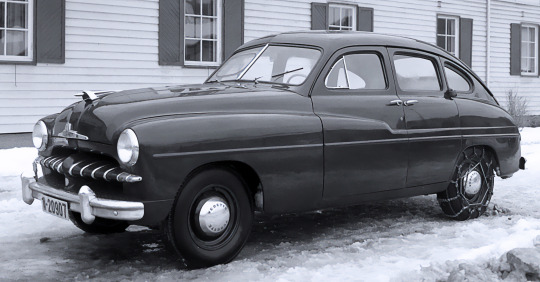

Ford Vedette, 1948. Another new car for the 1948 Paris Motor Show, made by Ford’s French subsidiary Ford SAF. The Vedette had originally been conceived by Edsel Ford and Ford designer Eugene T. "Bob" Gregorie as a “light” Ford model for the US market. However as Ford plans developed during the 1940s the “light” model had become superfluous so was given to the French instead. It was powered by a Poissy-made 2158 cc Aquillon sidevalve V8 engine of Ford's Flathead engine family. Ford SAF never achieved satisfactory sales and their Poissy plant also suffered industrial unrest which led to Ford selling their factory and model range to French car maker Simca in 1954.
170 notes
·
View notes
Text
History is very important to the automobile industry. Despite being a relatively young field, it’s well-documented, and full of great tales. Most of those tales are about hubris. Flashy Italian guy smuggles cocaine to pay for a Volvo-engined stainless steel coupe. Economy-minded automaker builds engines out of aluminum and forgets how to finish bolting them together. Henry Ford’s race car driver runs over a bunch of people, quits racing, then returns to racing and runs over even more people.
By telling these stories, the auto industry likes to paint itself as a brash group of aggressive innovators. Bold risk-takers. Complete assholes. This is because the sales department is running things. In reality, cars are made by a series of professional engineers progressively refining an essential product that is meant for mass consumption. Your choices are “bald-faced sociopathic lies” or “fucking boring stories about reducing cabin vibration with a slightly different durometer of rubber on the upper motor mount.”
This is where the auto owners step in. Most of us have at least one great story relating to cars, whether it’s an old crap-can that just wouldn’t die, or a road trip born under a bad sign that eventually erupted into a sort of rain-soaked horror movie climax. And we tell each other these stories, in order to cement the mythic status of the automobile in our lives. Sure, we bitch about our houses, but nobody’s eyes well up when they think about the glorious time they cleared the P-trap on their kitchen sink and finally got that chunk of hair out of there. Not when they could be making engine noises with their mouths and pretending to shift gears in the middle of a drunken story about illegal drag-racing, spoken way too loudly at a dinner party.
Of course, most of these stories are also bullshit. We have a tendency to mythologize, and also wallpaper over our own failures of memory with a dream of what must have happened. For instance, I once told a story about using a frequently-misfiring 1978 Plymouth Volare to fend off multiple police officers on a highway chase, but it was a little bit inaccurate. It was actually a 1979 Volare, which if anything makes the story even more thrilling.
196 notes
·
View notes
Note
I'm sorry I'm going to send this to you but I'm a bit freaked out.
Sergio stays for the rest of the season but the leak from the meeting is stressing me out. I know Horner and Marko are in some kind of the power struggle and I hate it but this whole mess makes me sick.
I hoped the news would make the rumours disappear but whatever is going on at RB just keeps getting worse and worse, I saw so much hate and so much speculations that I think it's worse than before.
So I want to ask for your opinion: Do you think the Verstappens really were informed that Sergio would be replaced? Why would Max say the car was the problem then? Do you think they will sack him after 2025? Is there anything that we can know for sure? Is it really all about Mexican GP and Liberty Media?
Anon, I understand you completely, this is rather stressful and to be honest, annoying.
True, Marko and Horner are fighting for control of RBR, but Marko is in total disadvantage, as Horner has more power and well, that means Marko lashing out and feeding the press with wild stories.
I do believe something fishy is going on. Both Checo and Daniel apparently are finishing the rest of the year, and 2025 is up in the air. With Checo, he has already a contract, so if they decide to fire him, I'm sure he has something up his sleeve. He wasn't fired from Racing Point without learning how to protect himself.
My fear is that he is informed about the firing thing when he can't have another seat for next year. With Sainz in Williams (and what's the deal with Vowles? sucking up to Carlos so hard it's making things uncomfortable for Logan, we get it dude, dial it down), and apparently Sauber is choosing Bottas to be with Nico, the only seats available would be Alpine (but probably will be taken by Schumacher) and Mercedes (and Toto is Toto, if he actually takes Checo is to say a big FUCK YOU to Horner).
This is, of course, the the worst case scenario, but then... what would the haters do? The press uses Checo as clickbait, the haters need the outlet from their sad little lives... imagine if Checo isn't there, they would need to look for another driver to crap on, and who has the time in this busy world?
What I can tell you for sure, the whole Liberty Media is a rumour (that people say Marko spread because he's like that). Why? They say Liberty Media begged RBR not to fire Checo because then they won't sell the Mexico Grand Prix tickets... you know what? THEY ARE SOLD OUT ALREADY! Geez people, what's the deal with this rumour? I'm Mexican, and I wanted tickets... and I got a big 'SOLD OUT' screen IN JANUARY. Last year, after the Mexico Gran Prix, there was a pre-sale for the 2024 Grand Prix, and it was sold out in December, apparently, because I didn't have the money until January, and got nothing! The only tickets available are the super, super expensive ones that only famous and rich people can afford, and are super exclusive as well. To be clear, those tickets cost almost my entire year's salary. Of course they say also the Austin and Las Vegas Grand Prix were at risk, as Checo is liked there, but Logan is also a favorite, so there's no risk if they let go of Checo (at least not like in Mexico if the tickets reaaaally weren't sold out).
The most likely scenario that RBR would have faced if they let go of Checo before Mexico Grand Prix would have been the booing and probably curse words from all the fans, but the tickets were never compromised. So I doubt that if RBR REALLY wanted Checo out, they would have bended over Liberty media. What I can believe is that maybe the sponsors and Ford were more of an influence than the Liberty Media thing.
So the only sure thing: Checo and Daniel end the year with their respective teams. 2025 is still on the air, according to Marko, but in my opinion, if Horner really delivers with the supposed support to Checo to help with the car and his engineers, this won't be an issue for him then, as he will start delivering as he was at the beginning of the season.
Also, cost-benefit, what's the best scenario? Getting a new driverwho has to get used to the the car? Or actually working with the pilot that has already the experience and just help him improve? People think that it's easy to adjust, but the RB20 is a capricious bitch, you never know when it's going to throw you a curve ball.
Sorry for the long rant anon, but honestly, when it's related to Checo, rumours and speculations are always around, it's like a curse.
Hugs for you, and hopefully it helped a little to lessen the anxiety? (if not, tell me and I'll send you Checo pics, they always calm me down).
Also, on a side note, I remembered I'm bummed out because I'm not going to Mexico's Grand Prix 😭😭, didn't get tickets on time, maybe next year 🥹
#anon questions#sergio perez#checo perez#it's funny what the press make up#better laughing than crying#I wanted to go the Mexican grand prix#🥹🥹🥹
12 notes
·
View notes
Photo



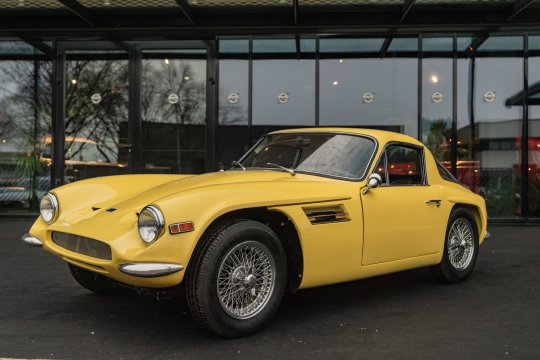

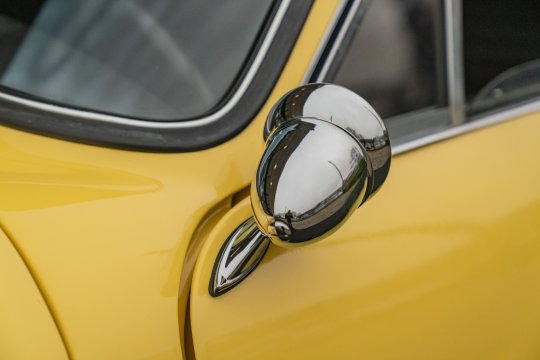


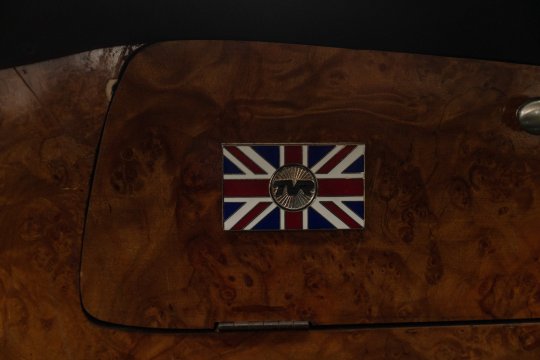
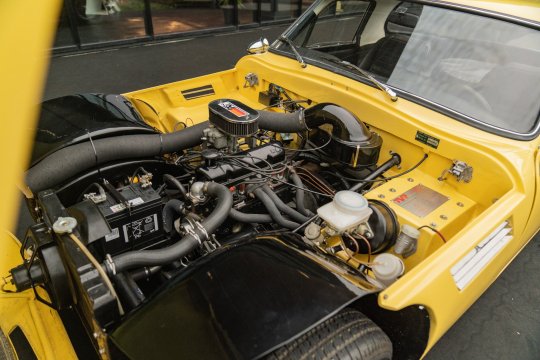
TVR Vixen
Although the Vixen used the same chassis as the outgoing Tuscan, the significant change was the use of the 1599 cc Ford Kent engine, as found in the Ford Cortina GT, developing 88 bhp. The Ford unit was selected in order to keep prices as low as possible and because of supply problems from BMC.
The Cortina unit was less powerful than the MGB engine which developed 95bhp, but it was also lighter. To use up remaining supplies, the first twelve Vixens built still received the MGB engine.
The Vixen’s bodywork was also slightly revised, with the bonnet having a broad flat air intake scoop and the rear of the car was fitted with the round “Ban the Bomb” Cortina MK I tail lamps.
The S1 was replaced by the heavily modified TVR Vixen S2 in October 1968. The S2 was built with a longer 90 inch wheelbase chassis, introduced on the Tuscan V8 but which TVR had now standardised to address complaints about difficulty of ingress. The bonnet was restyled again, with some early cars having a prominent central bulge and later cars having twin intake ducts at the front corners of the bonnet. The tail lamps were updated from the round Cortina MK I style to the newer wraparound Mark II style. Also very significant was the fact that the body was bolted, rather than bonded to the chassis, meaning it could be easily removed for repairs.
The interior was improved, with a leather-skinned steering wheel mounted much lower than before. In a further attempt to improve the quality feel, the body was thicker and panel fit was improved.
In December 1968, TVR announced that two more models, the S.2 Sport and S.2 Super Sports would be available as standard. These models came with an uprated engine from Speedwell including fully balanced bottom end, ported cylinder head and two twin choke Weber carburettors, with the Sports producing 100bhp and the Super Sports 115bhp. Both of these models came with seat belts and leather steering wheel as standard.
The S3 continued to improve the car with a number of detail changes. The heat extraction vents on the flanks behind the front wheels were decorated with “Aeroflow” grilles borrowed from the c-pillars of the Ford Zodiac Mark IV and the Ford four-cylinder engine was now in the same tune as in the Ford Capri, producing 92 bhp. Instead of wire wheels, cast alloy wheels were fitted as standard.
The S4 cars were an interim model that used the TVR M Series chassis with the Vixen body shell. Apart from the chassis, there were no significant mechanical or cosmetic changes between the S3 and S4. Twenty-two were built in 1972 and one in 1973.
The 1300 model arrived in late 1971 and was built in an attempt to fill an “economy” market segment for sports cars. It was powered by a 1296 cc Standard SC engine from the Triumph Spitfire engine making 63 bhp, and its lack-lustre performance limited its sales success. Top speed was barely 90 mph. Only fifteen were built, all in 1972. The final six of these cars were built on a M Series chassis and the very last 1300 was also built with M Series bodywork, although it never received a “1300M” designation.
144 notes
·
View notes
Text
Languages: Deutsch
Car manufacturers, energy companies and environmental NGOs have issued an urgent warning against revoking the EU’s 2035 de facto ban on the sale of new petrol and diesel cars ahead of the meeting of EU leaders on Thursday and Friday (27-28 June)
“The 2035 zero emission cars goal is Europe’s most straight-forward EV industrial strategy bringing vital investment to European companies,” the Platform for Electromobility, which counts members such as Renault Group, Uber, Volvo, Ford and Tesla, wrote in a joint statement published on Monday (24 June).
Under EU law, new cars sold after 2035 are not allowed to emit CO2 emissions, which de facto bans the sale of new cars with an internal combustion engine, such as diesel or petrol cars.
The coalition said it was “very concerned by recent statements calling on the incoming European Commission to reverse the already agreed on CO2 standards for cars and vans,” referring to the lawmakers within the centre-right EPP, who have declared their ambition to revoke the ban, and to instead allow for more ‘technological openness’.
continue reading
A ban on new internal combustion engine cars is just silly. They should ban all cars, except those used by the disabled. Invest in public transport that's accessible to all.
Of course, it's the right that want to drop the ban.
#eu#eu pol#conservatives#2035 fossil fuel cars ban#revocation sought#eu auto industry warning#unclear future regulation
5 notes
·
View notes
Photo

Common Issues That Arise After Engine Replacement in Ford Kuga I
#2.0 Ford Kuga I engines#Used Engines#Reconditioned Engines#Used Engines for Sale#Replacement Engines#Ford Kuga I
0 notes
Note
how much of the truck do you think Rhett has replaced over the years? (maybe the better question is what hasnt been replaced at this point) like do you think hes completely rebuilt the transmission and engine? is there a point that he will give up on it? or do you think hes the person that will say that as long as the seat is the same one its the same truck? cuz it isnt going to last forever because that truck is how old and its also been a farm truck all its life. regardless of what state we are all living in now its safe to say that the Wyoming winters have taken a toll on the truck in the form of rust and wear and tear. if he rusts through the frame (a death sentence for vehicles) will he buy the same make in model that has had an easier life and just take his transmission and engine (he just put those in less than 80,000 miles ago god danmit!!) out and put it into the one with the good frame. i think if he ever does throw the towel in on the truck hes going to keep the seat and put it in his room in the house because theres too many memories on that seat for the thruple

I am so happy that someone is asking me about the trucks because I have put so much unnecessary thought and work into them. But Rhett's truck... Jesus Christ, it is the bane of my existence. I cannot figure out what year it is, and it's been driving me up the wall, but I'll admit I've been using this sale listing as a reference.
I'm in trouble if this truck ever sells.
That old truck has close to 225,000 miles on it at this point; it's practically gone everywhere, and for some damn reason, it's still alive and kicking. Had about 100,000 miles when Rhett bought it, and he's driven it to all hell ever since.
He's replaced the front and rear wheel hubs three times now. Had to put in new ball joints, and rust essentially forced him to replace the transmission, fuel, and brake lines after a couple of years. Shortly after that, the transmission failed and forced Rhett to gather a few buddies to help him rebuild it. But it's been a lot of small fixes here and there, the forgettable things that take an afternoon, and that's it.
The old truck was built to last, and even though nobody is 100% sure where it spent its early years, it's been well taken care of. If there's an odd noise or it starts to act out of character, the problem is located and found within the week. It's always best to fix the issue when its small, rather than wait until it gets worse.
Trucks last on the Abbott ranch. Royal's vehicle is older than Rhett's, and it's still alive and kicking! I haven't done a ton of research into what Royal drives, but I think it's an '80s GMC C/K Sierra Classic.
Honorary comparisons.

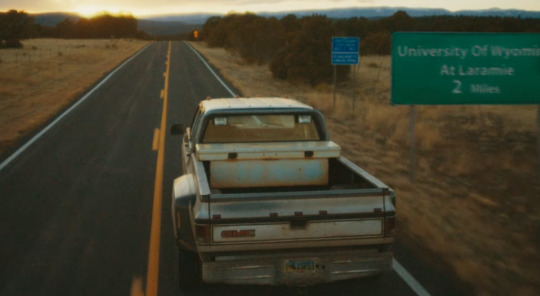


Nifty how Rhett and his Dad both seem to have Sierra's, lmao.
Regardless, it's an old truck. If Royal's truck can make it, so can Rhett's
Unless it becomes a money pit that can't stand to run for more than a few hours at a time, then Rhett's going to be hanging onto it. He could replace the whole vehicle over the course of time and still believe it's the exact same truck. But if it does fail, he'd likely go with another older-model truck with a bench seat. Maybe not the same make and model, but he'd be happy to bring home another in a different color.
As of the "current time" in the story, the Sierra is living herself a nice little life in the garage. Her Pavement Princess era, if you want me to start sounding cripplingly Gen-Z. Rhett's new work requires a lot of trailer pulling and things that the Sierra just couldn't keep up with, which means a new truck!
In Whispers In The Dark, I vaguely hinted that Rhett left the Sierra in Wyoming for a period of time because he'd bought a new truck after moving out.
This was the truck!
A 2019 Ford F-350 that I picked out back in February and simply never mentioned to anyone 😭 it never made sense to mention the exact make and model, so it got reduced to "Rhett's other truck."
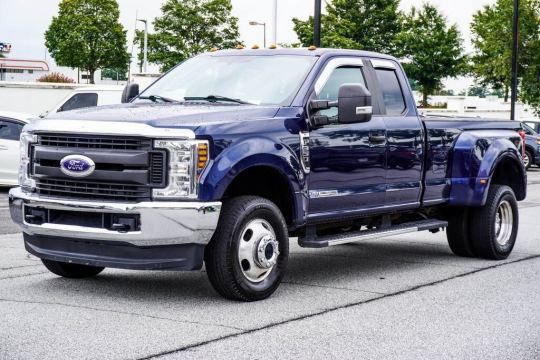

After the Sierra comes home, she gets to become the official date night vehicle, alongside Bob's. It's her only job now!
I haven't mentioned a ton about Bob's truck, but since we're already on the topic, he's got a 2021 Toyota Tundra in the color Midnight Black Metallic. I exclusively picked this truck for him because some models come with a front-row bench seat.
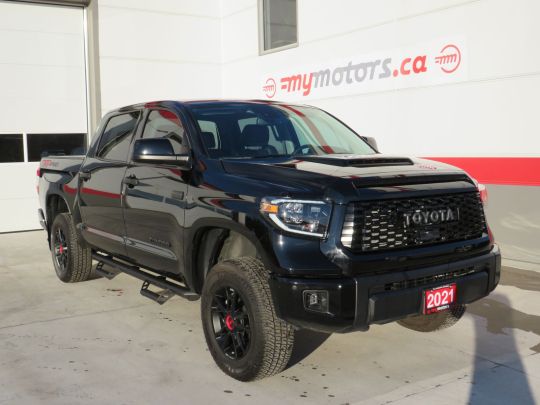

Who would have thought that I'd have so much truck lore 🧍♂️
11 notes
·
View notes
Text
Scene break teaser for chapter 5!
A Full House-El: Luthorcorp’s Surprising New Business Partner.
The Edge of Tomorrow - April 16th, 2016
Article by Mike Young
History is rife with examples of companies that reached just that bit too far, people who promised just that bit too much and were unable to back up their claims. Companies that made one fatal mistake, and realized too late just how rickety their lofty towers were. Blockbuster refused to buy Netflix; Kodak refused to shift into the digital camera industry; Palm PDA’s thought that cell phones were a ‘fad’ and refused to buy into it.
And, most recently; House El Incorporated has partnered with LuthorCorp.
House El Incorporated, more commonly known as ‘Elco,’ is a newer business in the tech scene. Launching late in 2012, Elco’s claim to fame is their alien outlook on the industry - literally. They broke into the scene with the Icon One, a cellular phone that has rapidly risen in popularity due to its slim size, large battery life, and processing power. The phone is quite literally decades ahead of the market, for a rather simple reason -
It uses alien technology to get there. The company’s CEO, a young woman named Kara Zor-El, is famously Kryptonian; she has founded her company on technology from beyond the stars, and aims to win the big bucks by monopolizing her hold on tech leagues beyond our development.
That would be a remarkably efficient way to climb to the top of the tech industry, if the Icon hadn’t been swiftly surrounded in scandal; its power source and method of transmission required strenuous testing before it could be introduced to the market. Testing that the phone is still going through four years later - the Icon has hit the market, but many experienced voices in the sector believe that such leaps in technology may be a bit beyond humanity’s reach.
Elco hasn’t released a new item since, apparently frightened by how seriously Earth takes the safety of its citizens. The Icon has rapidly faded from the public eye, a lack of innovation meaning newer phones have taken its spot on the stage. Now, the company is promising something entirely different: infinite energy!
If that sounds a bit fantastical to you, you aren’t alone. Ms. Zor-El recently held a meeting with several automobile companies; Ford, Porsche, Toyota, and Volkswagen were all intrigued by the promise of new engines to run electric cars on - engines that could provide limitless power with no need for fuel or recharging. We spoke to one member of the Ford board of directors, who was at the meeting, and he was less than enthused by the idea.
“She’s promising something that just isn’t there,” Richard Mietz told us, at The Edge of Tomorrow. “The engine she mentions is still in the labs; I would be interested in seeing more but [Ms. Zor-El] isn’t willing to share the fine details. She wants promises and contracts, but refuses investment - I don’t think she understands how things are done here. Currently, all we know is that there may or may not be an engine, it may or may not work - and she wants people to buy it as soon as it hits the market. I’m not sold.”
Other sources in the industry say the same - Elco’s ‘Waveform Resonance Engine’ is expected to take just as long, if not longer than the Icon to verify and test before it can hit the market. With the declining sales of the Icon and Elcos lack of income, most analysts expect the company to go under within the next two years.
Luckily for them, a new company seems rather eager to jump onto the sinking ship.
---
Nothing quite like some sleezy right-leaning media to shine perspective on things, hm? Bit of a delay for this chapter as I started a new job recently, hopefully chapter 6 will come quicker.
9 notes
·
View notes
Text


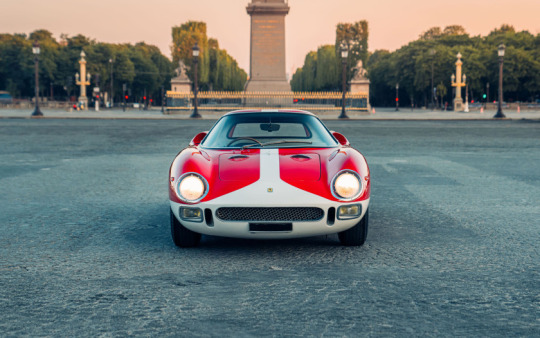
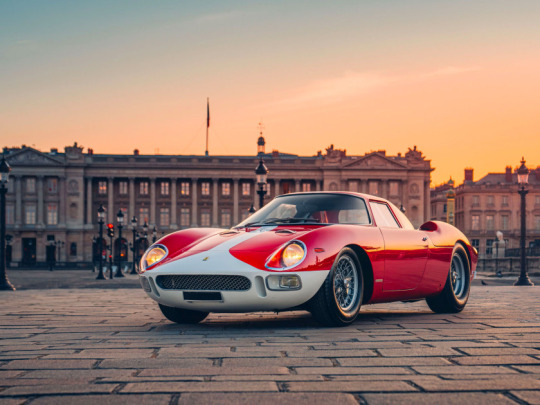
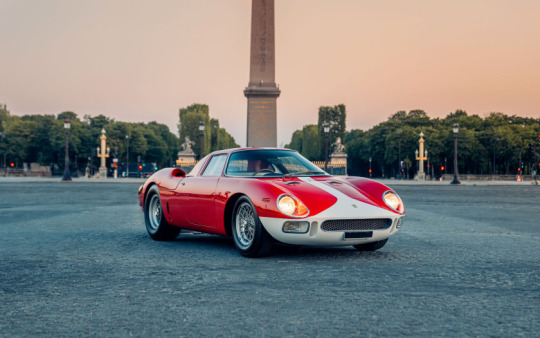
1964 Ferrari 250 LM Berlinetta by Pininfarina
Chassis No. 5901
Engine No. 5901
Internal number 138/LM
Gearbox No. 18
- 2023: 60th anniversary of the Ferrari 250 LM
- One of the absolute masterpieces in the history of the Automobile
- The 10th Ferrari 250 LM on only 32 copies built
- Rarer than a 250 GTO
- A real milestone in Ferrari history: the first car of the brand with a V12 engine in the rear center position, the last to win the 24 Hours of Le Mans before 2023!
- With Ferrari's victory at the hundredth edition of the 24 Hours of Le Mans 2023, the 250 LM is now part of a fantastic saga whose future remains to be written
- Matching numbers (chamber, engine, box, bodywork)
- History followed, restored in 1998/1999 by DK Engineering
- In a major French collection from 2002 to 2022
- Validated by the Ferrari Classiche committee, with a view to its certification
FERRARI 250 LM - MODEL PRESENTATION
Unveiled at the Paris Salon in October 1963, the 250 LM is a berlinette version of the 250 P which, presented in the previous March, can already boast of many successes in the race, before a victory at Le Mans in 1964. Designed under the authority of Chief Engineer Carlo Chiti, it is the first competition Ferrari with a V12 engine in a central position. The 246 SP inaugurated this new architecture in 1961, but with a V6 engine.
For the 250 LM, Scaglietti has signed a masterful shape, whose tapered front draws an amazing contrast with the long and muscular back that reveals the presence of powerful mechanics. The small central arch brings lightness to the pavilion, and one of the most spectacular elements is the vast hood that rises like a cathedral to reveal the bowels of this radical machine.
With the 250 LM, Enzo Ferrari wants to take over from the 250 GTO and have it homologated in GT. But if FIA officials have turned a blind eye to the Commendatore's tendentious arguments that allowed the homologation of the 250 GTO (which he had announced as a simple evolution of the 250 GT), this time they do not let themselves go and demand the production of the 100 copies required. However, Ferrari will only produce 32, so that the 250 LM will remain in the "Prototypes" category and will have to compete against more powerful cars, the most emblematic of which will be the Ford GT40 mentioned above. Glorious protagonist of the Ford-Ferrari duel, the 250 LM beautifully defended the colors of the Italian manufacturer by compensating for its power deficit with qualities of handling and maneuverability that were lacking in other more powerful cars. Carlo Chiti had seen it right by managing to convince Enzo Ferrari to switch to the rear engine, when he was reluctant.
Moreover, the 250 LM should have been called 275 LM (according to the Ferrari nomenclature using the unit displacement) because after the copy of the Paris Motor Show, the following ones received a 3.3 Liter engine; hoping to deceive the vigilance of the FIA for the reasons mentioned above, Enzo Ferrari wanted to keep the name 250.
Given its design, the 250 LM was intended for the track much more than for the road, and most of the copies produced have experienced the throes of competition and its hazards. However, this is not the case with the car we present, whose career took place in the hands of individuals and collectors who have never engaged it in the race. It was certainly present in 1966 at the 24 Hours of Daytona, but as a simple reserve car. This is why it is now beautifully preserved of origin, as we will see later.
THE FERRARI 250 LM OF THE SALE, #5901
The complete history of this work of art is established and documented by brand specialist Marcel Massini. According to the manufacturing sheet of this 250 LM, its tubular chassis was supplied to the Scaglietti bodywork in Modena on June 24, 1964. On September 18, the assembly of the engine, carried out by mechanic Baschieri, was completed under the control of foreman Amos Franchini. It was the same Amos Franchini who supervised the assembly of the gearbox, completed on September 23 by Ivo Giusti. The official order of Luigi Chinetti, boss of the N.A.R.T. (North American Racing Team) and importer of the brand based in New York, dated the following November 6, followed on the 14th by the manufacturer's invoice. On November 20, the car was transported to the port of Livorno and embarked on board the cargo ship Maria Costa, which then left for New York. After his arrival, the car was sold by Chinetti to its first owner, Raymond John Augusterfer, residing in Philadelphia.
On February 5 and 6, 1966, this Ferrari 250 LM was used as a reserve car for the 24 Hours of Daytona by the N.A.R.T., but no damage having stopped the engaged cars, it will not take part in the race and will remain in the paddock. The following year, Luigi Chinetti took over the car and sold it in 1968 to George Arents, from Warren, then in 1969 to Walter and Irene Young, from Wilton. After a visit to Kirk F. White Motorcars (Philadelphia), the car was bought on June 29, 1970 by William B. Rearden (Villanova, Pennsylvania), for the sum of $16,500 with, in soulte, his Ferrari 330 P Spider. Rearden kept her for eight years, while she appeared in issue 37 of Prancing Horse, the Ferrari Club of America bulletin, next to the 330 LMB and the Dino 246 GTS in her collection. Its owner also had the opportunity to use it on June 1, 1974 at the Ferrari club's annual meeting on the Lime Rock circuit, then at the Ferrari Parade organized as the opening of the Watkins Glen F1 race on October 5, 1975.
Artcurial
#ferrari#250LM#prancing horse#le mans#24 hours of Daytona#pinafarina#italian#Artcurial#sixteen million dollars
8 notes
·
View notes
Text
Oof!!! This is gonna be expensive...

Restored Douglas A-26B INVADER suffered a nose-gear collapse on 25 July while arriving to take part in the EAA AirVenture 2016 at Whitman Regional Airport (KOSH), Oshkosh, Wisconsin.
Partially-extended nose gear collapsed resulting in damage to the gear, nose, windmilling props and perhaps the engines. No injuries reported.

Source, Aviation Safety Network. Reddit R/Aviation and Twitter.
(edit)
A notice dated 12/30/2020 showed the aircraft was for sale and according to published data it had been at least partially repaired. Asking price was $545,000 which seems very low for such an aircraft in flyable condition. The engines alone, zero-time, are worth half a million each.
(edit again)
FlightAware shows a 13-minute flight around Ford Airport (Iron Mountain Kingsford MI) in September of 2022, but nothing since then. Also FlightAware has a gallery of photos of the aircraft but they don't show it sliding along the runway at AirVenture on its nose.
2 notes
·
View notes
Text
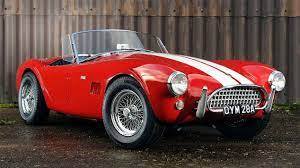
1963 AC SHELBY COBRA
1963 AC SHELBY COBRA 4.7-LITRE MARK II ROADSTER
REGISTRATION NO. OYM 28A
CHASSIS NO. CSK2116
ENGINE NO. CSX2116
Footnotes
Rightly regarded as one of the all-time great classic sports cars, the muscular, fire-breathing Cobra succeeded in capturing the hearts of enthusiasts like few of its contemporaries. Only 1,000-or-so Cobras of all types were built between 1962 and 1967, but such was the model's enduring popularity that production was resumed in 1982 under the auspices of Brooklands-based Autokraft.
Convinced that a market existed for an inexpensive sports car combining European chassis engineering and American V8 power, Le Mans-winning Texan racing driver Carroll Shelby concocted an unlikely alliance between AC Cars and the Ford Motor Company. The former's Ace provided the simple twin-tube chassis frame - designed by John Tojeiro - into which was persuaded one of Ford's lightweight, small-block V8s. It was discovered that the latter was lighter than the six-cylinder Ford Zephyr unit that AC was using, yet with vastly greater potential. To cope with the projected power increase, the Ace chassis was strengthened with heavier gauge tubing and supplied fitted with four-wheel disc brakes. Weighing a mere 1.5cwt more than a Bristol-engined Ace yet endowed with double the power and torque, the Cobra turned in a breathtaking performance, racing to 60mph in 4.4 seconds and reaching the 'ton' in under 12, exceptional figures by early 1960s standards and none too shabby even today.
The 260ci (4.2-litre) prototype first ran in January 1962, with production commencing later that year. Exclusively for the USA initially, Cobras - minus engines - were sent from England to be finished off by Shelby in California, and it was not until late in 1963 that AC Cars in Thames Ditton got around to building the first fully finished cars to European specification.
After 75 Cobras had been built with the 260ci engine, the more powerful 289ci (4.7-litre) unit was standardised in 1963. Rack-and-pinion steering was the major MkII up-date; then in 1965 a new, stronger, coil-suspended MkIII chassis was introduced to accommodate Ford's 427ci (7.0-litre) V8, an engine that in race trim was capable of producing well in excess of 400bhp. Wider bodywork, extended wheelarch flares and a bigger radiator intake combined to create the definitive - and much copied - Cobra MkIII look. Keeping ahead of the competition on the racetrack had been the spur behind Shelby's adoption of the 427 engine, but some MkIIIs to 'street' specification came with Ford's less powerful 428ci hydraulic-lifter V8.
But for Brian Angliss, the Cobra story would have ended in 1967. The Autokraft boss had built up a business restoring Cobras and supplying parts, and in the early 1980s acquired the rights to the AC name plus a quantity of jigs and tooling from the old Thames Ditton factory. Keeping the overall style of the MkIII, Autokraft produced the MkIV, which was appropriately updated to meet current legislation and powered by a 'Federalised' Ford 5.0-litre V8 engine. Around 480 were built.
Chassis number 'CSX2116' was invoiced to Shelby American on 16th April 1963 and shipped to Los Angeles three days later aboard the 'SS Loch Gowan'. Invoiced on 18th June 1963 to Burton Motors of Sacramento, California, the Cobra was sold new to a local doctor who used it for a few years before giving it to his daughter. She used the car as daily transport for several years before the clutch failed, at which time it was sold to Steve Dangremond of Santa Rosa, California. The Cobra was advertised for sale by Mr Dangremond in late 1977 and bought by Dr Grant Hill of Chotoka, Alberta. Dr Hill fitted Weber carburettors and raced 'CSX2116', eventually trading it to Fred Yule in Portland, Oregon. At that time, the car was still finished in its original colour scheme of dark blue and retained its original black leather interior.
'CSX2116' returned to the UK in the late 1980s and was advertised through Hampson's Ltd, by which time it had been refinished in red and fitted with a full-width roll bar. Subsequent owners in England were Dr Carlos Barbot, Trojan boss Peter Agg and Formula 1 racing driver Rupert Keegan. 'CSX2116' was last restored in 1988, records on file indicating that an extensive mechanical restoration was undertaken at this time. The car still retains its original black leather interior though the Weber carburettors have gone, replaced by an easier to maintain four-barrel Holley. There is considerable additional accompanying documentation including correspondence between previous owners, a copy of the original bill of sale, Shelby American Automobile Club letter of authentication, FIA papers and Swansea V5 registration document. The car has belonged to the current owner since 2006.
Early Cobras are offered for sale only rarely and this example represents a wonderful opportunity to acquire a fine example of this classic of Anglo-American sports car design.
93 notes
·
View notes